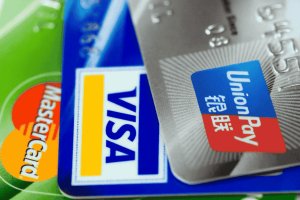Overspending can prevent you from reaching your financial goals and lead to long-term debt. Many people find themselves caught in a cycle of impulse purchases, emotional spending, or excessive credit card use without realizing how much it affects their financial health. Breaking free from these habits requires awareness, discipline, and practical strategies.
In this guide, we’ll explore why people overspend, how to change spending behaviors, and effective methods to save more money without feeling deprived.
1. Recognizing Why You Overspend

Understanding the reasons behind your spending habits is the first step to overcoming them.
Common Causes of Overspending:
- Emotional Spending – Buying things to cope with stress, boredom, or sadness.
- Impulse Purchases – Shopping without planning or considering long-term consequences.
- Credit Card Overuse – Relying too much on credit for everyday expenses.
- Social Pressure – Spending to keep up with friends, family, or social media trends.
- Lack of Budgeting – Not having a clear financial plan or tracking expenses.
- Marketing Traps – Falling for sales, discounts, and limited-time offers that encourage unnecessary purchases.
Solution: Identify your spending triggers and be mindful of them when making purchases.
2. Creating a Realistic Budget
A well-planned budget helps control spending and ensures you allocate money for essential expenses and savings.
How to Build a Budget That Works:
- Track Your Expenses – Review your bank statements and categorize your spending.
- Prioritize Needs Over Wants – Focus on essentials like rent, food, and debt payments before luxury items.
- Use the 50/30/20 Rule:
- 50% for necessities (housing, bills, groceries).
- 30% for discretionary spending (entertainment, dining out, hobbies).
- 20% for savings and debt repayment.
- Set Spending Limits – Use a budgeting app to monitor and control discretionary expenses.
- Automate Savings – Transfer a portion of your income directly into a savings account before spending.
Solution: A structured budget reduces impulse buying and keeps financial goals on track.
3. Switching to a Cash-Only System
If credit cards lead to overspending, switching to cash or a debit card can help enforce better spending habits.
Why It Works:
- Physically handing over cash creates a stronger emotional connection to money spent.
- Limits spending to what you actually have, avoiding unnecessary debt.
- Makes budgeting easier by reducing unexpected expenses.
Solution: Withdraw a set amount of cash for discretionary expenses and commit to using only that amount each month.
4. Avoiding Impulse Purchases
Impulse shopping is one of the biggest causes of overspending. Breaking this habit requires conscious effort.
Strategies to Stop Impulse Buying:
- Follow the 24-Hour Rule – Wait at least a day before making non-essential purchases.
- Make a Shopping List – Stick to a list when shopping to avoid unnecessary buys.
- Unsubscribe from Retail Emails – Reduce temptation by limiting exposure to promotions.
- Delete Saved Payment Info – Removing autofill payment options forces you to reconsider purchases.
- Limit Social Media Influences – Avoid impulse shopping inspired by influencers or trends.
Solution: Delaying purchases and reducing exposure to marketing helps curb unnecessary spending.
5. Identifying and Reducing Emotional Spending
Many people turn to shopping as a way to relieve stress, sadness, or boredom, leading to financial regret later.
How to Manage Emotional Spending:
- Recognize Triggers – Track emotional patterns linked to spending habits.
- Find Alternatives – Replace shopping with activities like exercising, reading, or socializing.
- Set Financial Goals – Having savings goals makes it easier to resist emotional spending.
- Use a Spending Journal – Writing down what you buy and why helps identify problem areas.
Solution: Understanding the emotional triggers behind spending helps develop healthier financial behaviors.
6. Using Credit Cards Wisely

Credit cards can be helpful tools, but they can also contribute to overspending if not used responsibly.
Smart Credit Card Habits:
- Pay in Full Each Month – Avoid interest charges by clearing your balance.
- Set a Credit Limit – Use only a portion of your available credit to maintain control.
- Turn Off Auto-Pay for Non-Essentials – Manually review discretionary purchases before paying.
- Use a Credit Card for Necessities Only – Stick to bills and groceries rather than luxury items.
Solution: Use credit cards strategically to build credit without falling into debt.
7. Setting Clear Financial Goals
Having financial goals provides motivation to control spending and save more.
Effective Goal-Setting Methods:
- Short-Term Goals – Saving for an emergency fund or paying off a credit card.
- Long-Term Goals – Planning for a home, retirement, or large investment.
- Create a Vision Board – Visualizing financial success helps reinforce positive habits.
- Reward Yourself (Within Budget) – Celebrate progress with budget-friendly rewards.
Solution: Having clear goals makes it easier to resist unnecessary spending and stay on track financially.
8. Automating Savings for Long-Term Success
One of the best ways to save more is to automate your savings so that you don’t have to think about it.
How to Automate Your Savings:
- Set Up Auto-Transfers – Schedule a portion of your paycheck to go into a savings account.
- Use Round-Up Savings Apps – Apps that round up your purchases and save the difference.
- Contribute to a Retirement Plan – If your employer offers a retirement savings plan, contribute regularly.
- Create Multiple Savings Buckets – Have separate accounts for emergency savings, travel, and major purchases.
Solution: Automating savings makes it effortless to grow your financial security over time.
9. Surrounding Yourself with Financially Responsible Influences

Your financial habits are often influenced by the people around you. Being surrounded by financially responsible friends and family can help reinforce good spending habits.
How to Build a Positive Financial Environment:
- Discuss Financial Goals with Friends – Talking about finances can provide support and motivation.
- Follow Personal Finance Experts – Learning from financial advisors and experts can help develop smart habits.
- Limit Peer Pressure Spending – Say no to unnecessary outings or expensive purchases if they don’t fit your budget.
- Join Online Finance Communities – Engage with others working toward similar financial goals.
Solution: Positive influences help reinforce responsible financial behaviors and spending habits.
Conclusion
Breaking free from overspending habits requires self-awareness, discipline, and strategic planning. By identifying spending triggers, budgeting effectively, automating savings, and surrounding yourself with positive influences, you can take control of your finances and achieve your financial goals.
With the right mindset and tools, you can save more, spend smarter, and build a stronger financial future.









